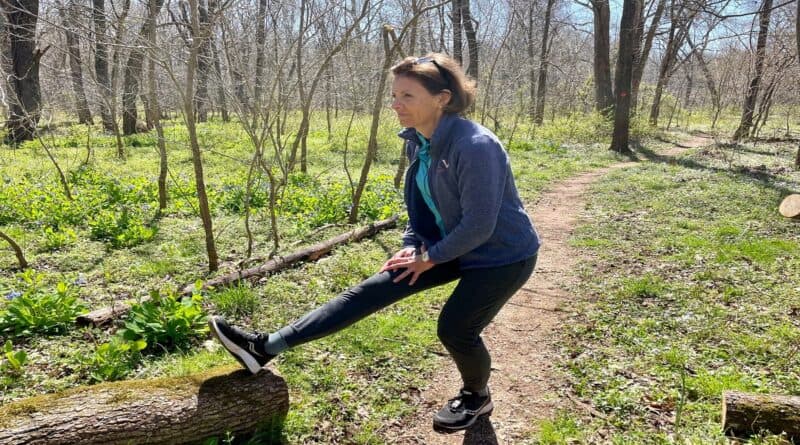Need to Know: How Should I Stretch Before and After a Hike?
Hiking stretches – to be done both before and after a hike – aren’t always top of mind. Particularly if you’re young and already fairly limber.
However, everyone should stretch pre- and post-hike. Simple stretches for hiking can help prevent injury, strains, and sprains on the trails.
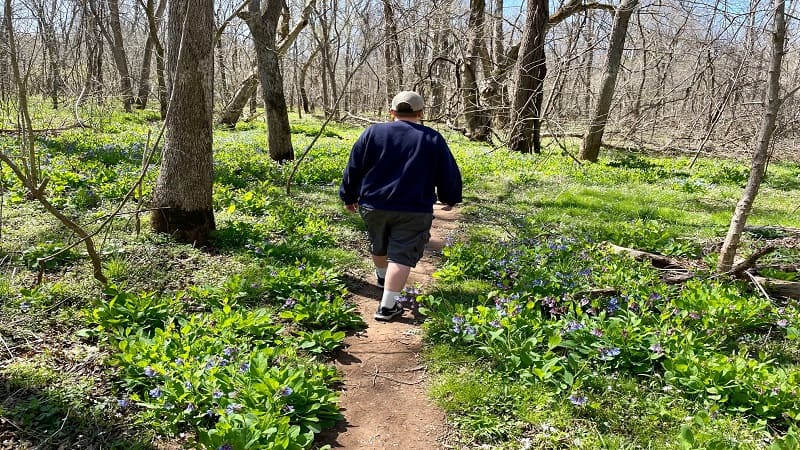
By stretching before and after a hike, you’re setting your body up for success, strength and less soreness. These are all good things.
In this article we cover the how, when and where of pre- and post-hike stretching. We’ll also share 10 top hiking stretches for your next hiking adventure.
Should I Stretch Before or After a Hike?
In all honesty, you should stretch before and after a hike. Stretching before and after a hike helps in different ways and in ways that are good for your body.
Stretches before hiking warm up your muscles by increasing blood flow. As a result, it provides more flexibility and range of motion for hiking.
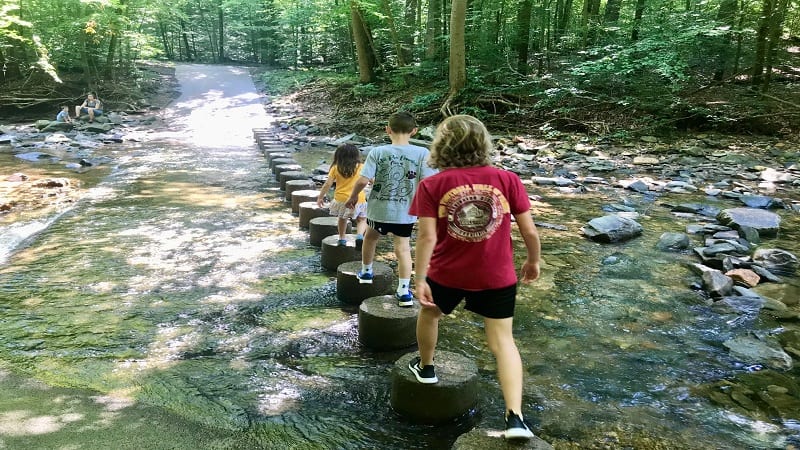
Stretching after a hike helps your body and mind wind down from the activity. It also helps release lactic acid and aids in your post-hike recovery.
As you can see, both types of stretching are important, and not just for beginner hikers. They both help you avoid injury and pain in different ways.
How Should I Warm Up Before Hiking?
Warming up before a hike is essential to help prepare your body for exercise. Warmed up muscles are less susceptible to injury and strain.
First, start with a simple warm up exercise before hiking, like brisk walking for a few minutes. This dynamic stretching helps wake up the muscles.
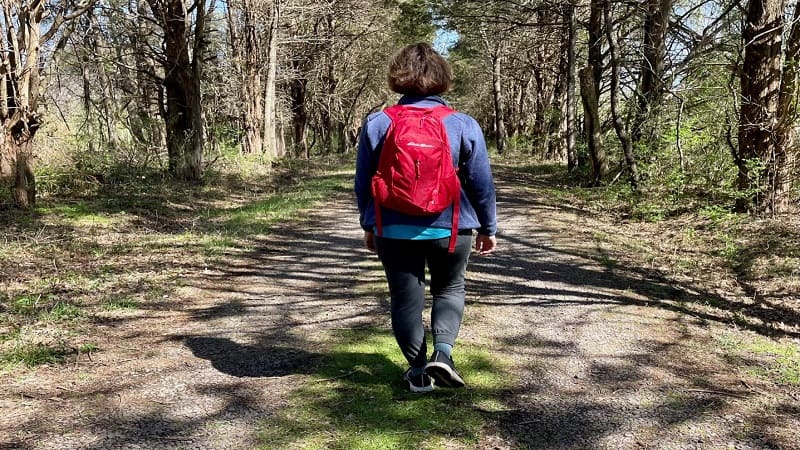
Once you’ve warmed up with easy walking, do your pre-hike stretches. Focus not only on your legs, but on all of your core muscle groups.
Hiking engages your hip flexors, quads, your core, your obliques and back, even your shoulders and neck. Take a quick break to stretch, then hike on.
How Should I Cool Down After a Hike?
Most people know that it’s essential to warm up your body and muscles before strenuous activity. However, cooling down is just as important.
Your post-hike cool down routine should involve stretches, light movement and nutrition. Stretching should be done immediately after hiking.
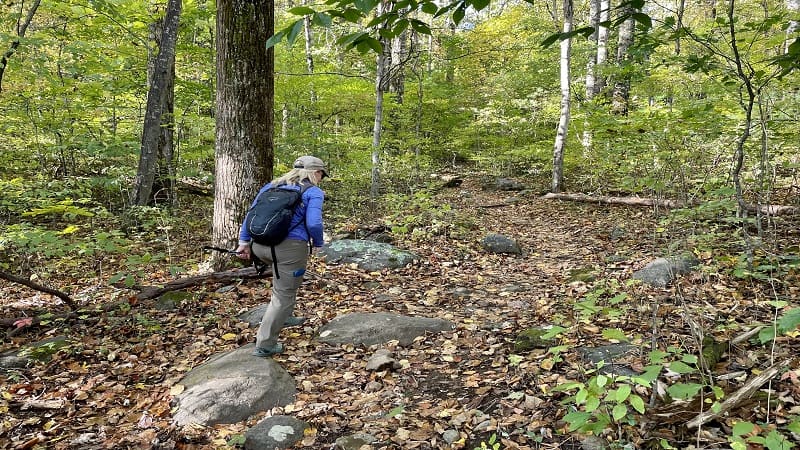
When doing your cool-down stretches after hiking, focus on the muscle groups you used the most on the hike. This includes legs, flexors, core, shoulders, etc.
In addition to stretching, you should eat within 45 minutes of finishing your hike. Snacks with lean protein and complex carbs help your body recover.
Pre-Hike Stretches
Here are five good stretches to do before hiking. These hiking stretches touch several sections of your body, including hamstrings and hip flexors.
These are easy to do from the parking lot or at the trailhead. A few stretches, like the hamstring stretch, may require something elevated, like a log or car bumper.
#1: Hip Flexor Stretch
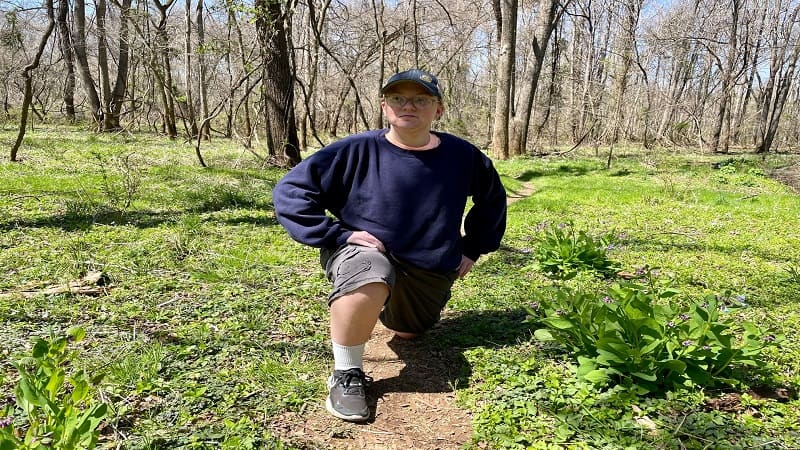
Your hip flexors are a group of muscles near the front of your hip in your pelvic region on each leg. These muscles are often tight, and really need to be stretched.
Properly warmed up and stretched hip flexors are less susceptible to aches and injury while hiking. Make this stretch a part of your hiking routine.
Stretching out hip flexors feels very similar to a lunge. To do this, step forward with one leg and place your other knee on the ground.
Once you are kneeling, put your hands on your hips and lean forward into the stretch. Hold for 15 to 30 seconds. Repeat this stretch with your other leg.
#2: Hamstring Stretch
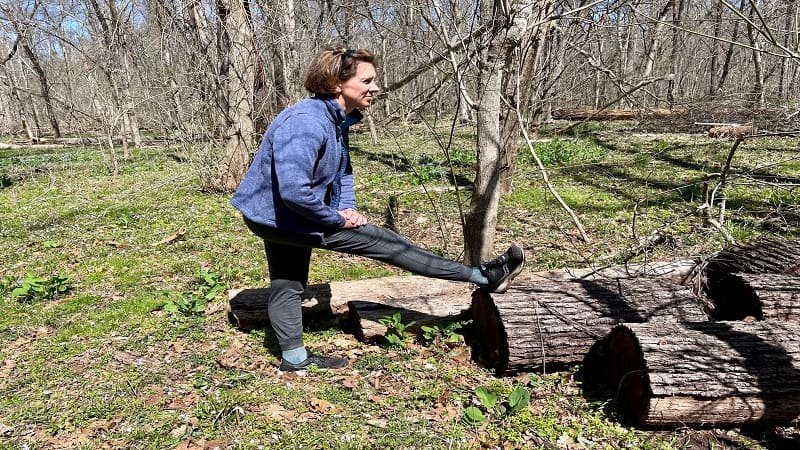
Many people experience tight hamstrings. The hamstring stretch is essential for getting loose, notes the Loudoun Sports Therapy Center in Sterling, Virginia.
You can easily do this stretch at the trailhead or after you’ve hiked for a little bit. You will definitely feel this stretch, but don’t push it if it hurts.
To do this stretch, extend one leg out and rest your right foot on an elevated surface. A curb or log can work well for this. Next, dip down and stretch.
Keep your spine straight and bend your other knee to lower your chest near your thigh. Hold for 10 to 30 seconds. Repeat this stretch on both legs.
#3: Posterior Shoulder Stretch

You will usually carry some kind of pack when you’re hiking, even if it’s just a lightweight daypack. So, be sure to stretch your shoulders and back.
Stretching your shoulders warms them up and prepares them for carrying a load. Stretching also helps prevent strain and injury on your hike.
In the posterior shoulder stretch, start with your legs hip width apart. Stretch one arm directly across your chest and hold it with your other hand.
Use your opposite hand to grab and hold your elbow and pull tight to your chest. Hold this stretch for 15 to 30 seconds and repeat on the other arm.
#4: Quadriceps Stretch

Your quadriceps are a group of muscles on the front and side of your thighs. This is a basic stretch that can go a long way, so don’t skip it.
This stretch is simple and can be done anywhere. In addition to stretching your thigh, it can help stretch your groin and your core, too.
To do this stretch, lift one leg up behind you, bending at the knee. Keep the other leg straight.
Hold one foot with your hand, stretch. Hold for 30 seconds, repeat for both legs.
#5: Arm Swings
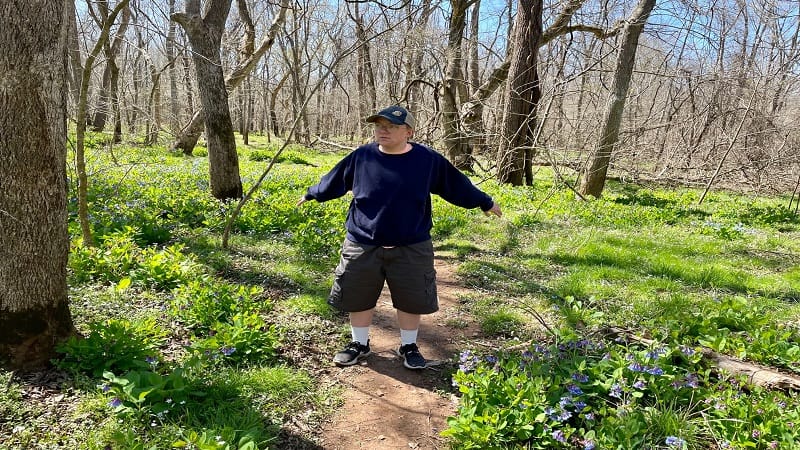
This stretch is another one that will help warm up and stretch out your chest, shoulders and upper body.
Warming up your arms and shoulders will help prevent injury when you are carrying a backpack or using trekking poles.
This stretch is really simple and you can do it anywhere at any time. Without your pack on, hold your arms out to your sides.
Then swing your arms in front of you until they cross over each other. Swing back out as far as you can and back in, keep swinging for 15 to 30 seconds.
Post-Hike Stretches
Stretching after a hike is as important as stretching before a hike. It’s good to wind down and prepare your body for proper post-hike recovery.
Much like pre-hike stretches, for post-hike stretches, it’s also a good idea to re-visit as many muscles as you can, including hamstrings and glutes.
#1: Seated Hamstring Stretch
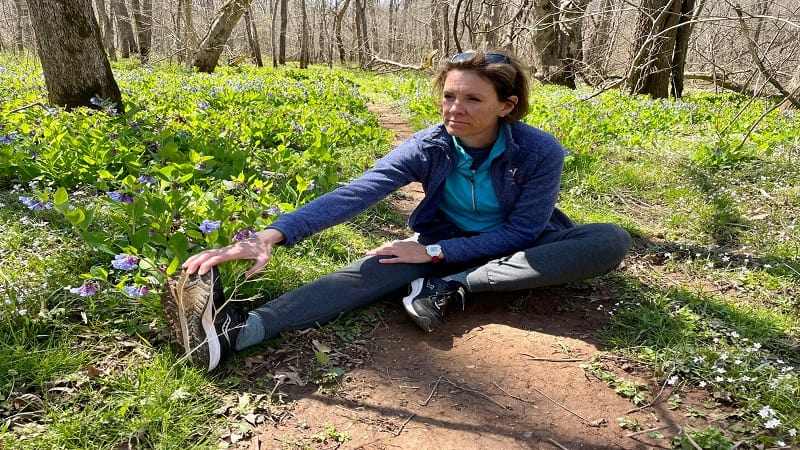
From a seated position, stretch one leg out in front of you while the other one is bent and tucked up, like a half-butterfly pose.
How you do this stretch will depend on your personal range of motion. If you can reach your toes, bend forward and hold your toes.
However, if you can’t touch your toes, that’s fine. Lean forward and stretch out your arms. Bend in to the stretch as far as you can go without pain.
This is similar to the standing hamstring stretch, but it stretches you a bit differently. Hold this stretch for 15 to 30 seconds. Repeat with the opposite leg.
#2: Butterfly Stretch
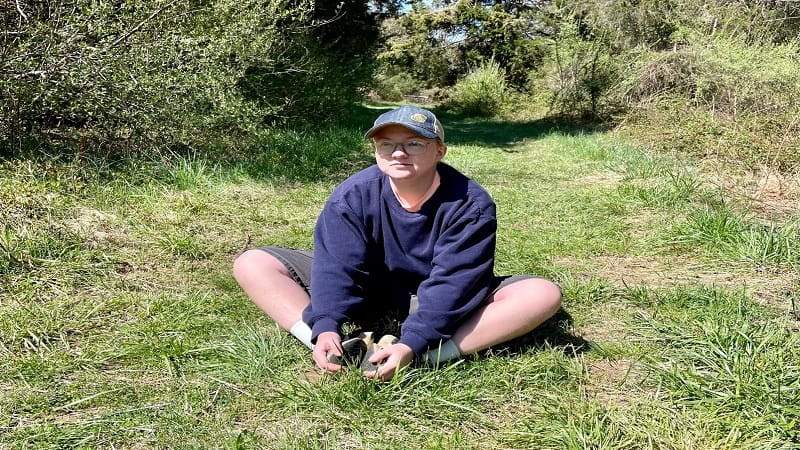
The butterfly stretch will further stretch your hamstrings, as well as your groin and hip flexors. You’ll feel this one, but it helps so much.
To do this stretch, start from a seated position. Bend your knees and bring your legs in like you’re going to sit cross-legged.
Instead of crossing your legs, put the soles of your feet together for this stretch. Hold your feet together with your hands.
Next, press your knees down towards the ground until you feel a good stretch. You can use your elbows to help. Hold for 15 to 30 seconds.
#3: Glute Stretch

A glute stretch helps stretch out the back of your thighs, hips and your glute muscles. Both spots are commonly sore after a good hike.
For this stretch, lie on your back with your knees bent and your feet flat on the ground. Keep your back, shoulders and head laying flat, if you can.
Then, cross one ankle over the other knee, as if you are sitting and resting one leg on top of the other.
With your ankle resting on one knee, reach under the knee of the flat foot and raise your legs. Hold for 15 to 30 seconds, then switch legs and repeat.
#4: Neck Stretch
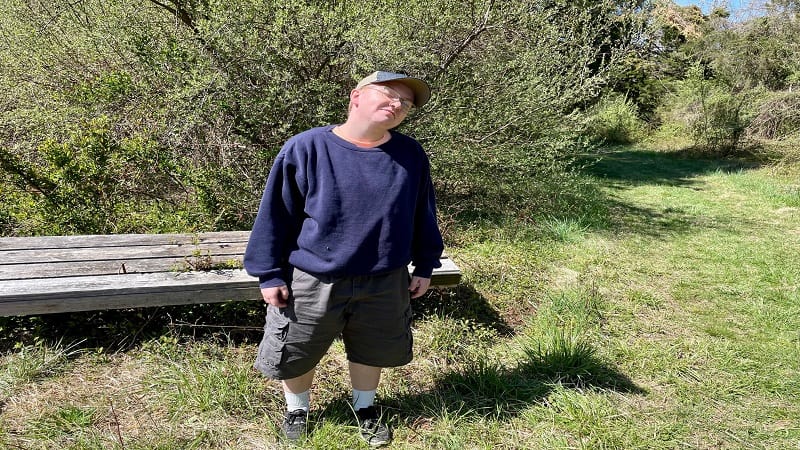
The neck stretch is one of the most important post-hiking stretches because you spend a lot of time looking down while hiking.
This stretch will help stretch the back and sides of your neck. It also stretches the top of your back and shoulders, too.
This stretch is pretty simple. It just uses the weight of your head to stretch out your muscles. You can use your hand for additional stretch too.
For this stretch, lean your neck to one side and bring your ear near your shoulder. Stretch for 15 to 30 seconds, then repeat on the other side.
#5: Shoulder Stretch
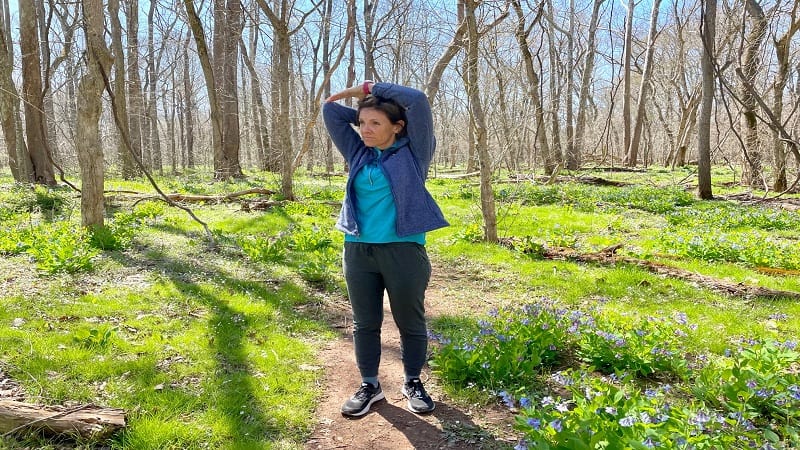
Stretching your shoulders after a hike is really important. Whether you carried a backpack or used trekking poles or both, you need this one.
Your upper body does a lot more work than you think it does. It’s not just your legs and glutes doing all the work on a hike.
For this stretch, raise one arm overhead with your forearm hanging behind your back. Grab the raised elbow with your opposite hand.
Use your opposite hand to pull your arm over even more until you feel a good stretch. Hold this stretch for 15 to 30 seconds, then switch arms and repeat.
Wrap-Up Notes
When stretching before and after a hike, it’s important to feel a stretch – but not pain. That’s according to Sampsell Physical Therapy in Winchester, Virginia.
“You may feel light resistance in your muscles, but you should never feel pain in a stretch.” If you feel pain, don’t push your muscles.
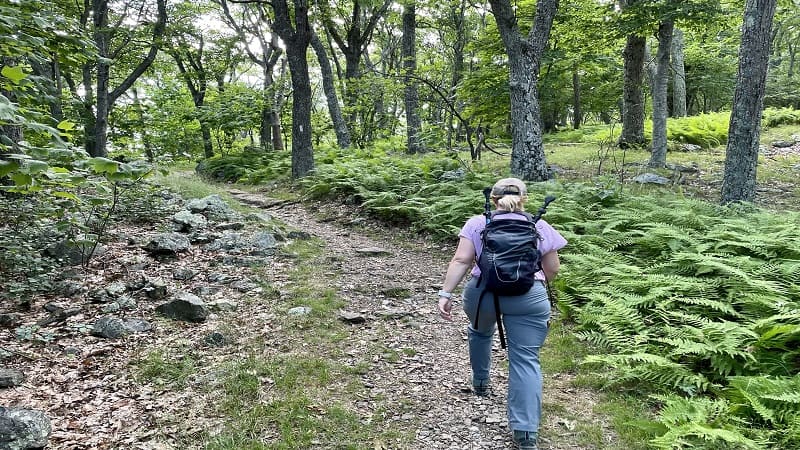
Stretching both before and after a hike will reduce your chance of injury and soreness. It also speeds recovery.
It’s a good idea to warm up and engage in some light stretching before a hike and also complete a cool down, stretch and snack routine after your hike.
Disclaimer: The words in this blog, and in any linked materials, are not intended as medical advice. Always seek the guidance of your doctor with any questions regarding your health or a medical condition.
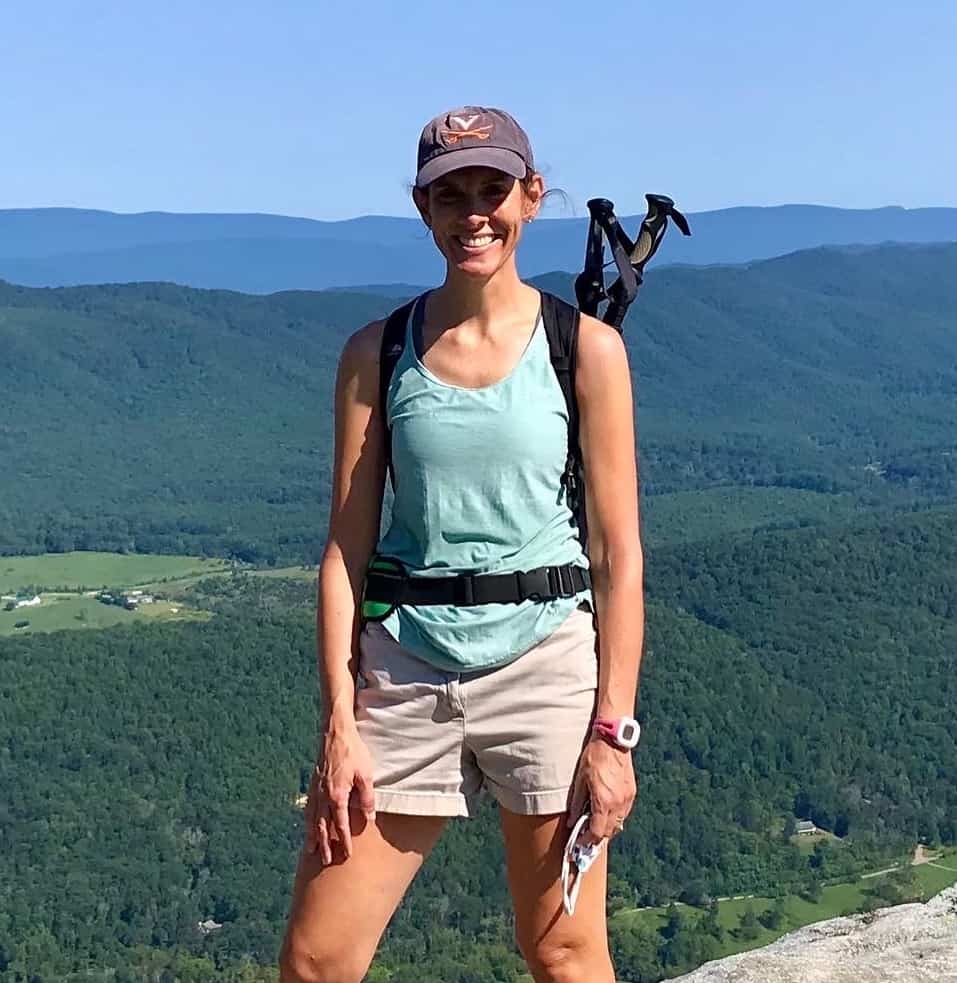
Erin Gifford has completed more than 300 hikes in Virginia. She is also the author of three hiking guidebooks from Falcon Guides. Need help finding a hike? Check out the Trail Finder feature or send Erin an email at [email protected].

